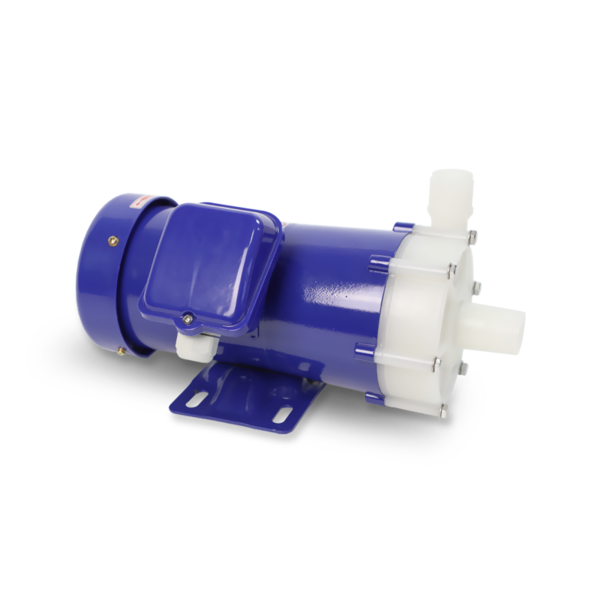모모In the field of industrial fluid transportation, pumps play an important role as key equipment in various process flows. The KS series stainless steel coaxial centrifugal pump is widely used in industries such as pure water treatment, chemical engineering, and surface treatment due to its high efficiency, durability, low noise, and small size.Doing these simple things can also make Magnetic pump Sowing high-quality genes will eventually grow into towering trees and become the leader in the industry. http://www.luoyuan108.com/
모모
모모Product Features
모모
모모1. Specially designed impeller: The impeller of KS series stainless steel coaxial centrifugal pump has been specially optimized to improve the efficiency and service life of the pump. This design enables the pump to achieve higher efficiency and lower energy consumption when transporting liquids.
모모
모모2. High efficiency and long service life: The KS series stainless steel coaxial centrifugal pump has the characteristics of high efficiency and long service life, which can provide stable power output for industrial production while reducing equipment maintenance and replacement costs.
모모
모모3. Low noise and small size: This type of pump produces less noise during operation, reducing the impact of noise on the working environment. At the same time, it has a small volume, occupies less space, and is convenient to use in environments with limited space.
모모
모모4. Excellent corrosion resistance: The KS series stainless steel coaxial centrifugal pump is made of stainless steel material, which can withstand the erosion of various corrosive liquids and ensure stability for long-term use.
모모
모모5. Easy maintenance: The pump has a simple structure, easy disassembly and assembly, and is easy to maintain and upkeep, reducing equipment maintenance costs and time costs.
모모
모모6. Wide applicability: KS centrifugal pumps are suitable for different process flows in various industries such as pure water treatment, chemical engineering, and surface treatment, meeting various usage needs.
모모
모모7. Stable conveying flow rate: The flow rate of KS pump is stable, which can ensure the stable operation of the process flow.
모모
모모8. High pressure: The pump has a high head, which can meet the needs of different process flows.
모모
모모9. High temperature resistance: The KS series stainless steel coaxial centrifugal pump has excellent high temperature resistance. In general, its maximum operating temperature can reach 150 뫥/302 H, depending on the material and process requirements used.
모모
모모Specifications and parameters
모모
모모Model Number: KS
모모
모모Flow range: 40-1360 (L/min)
모모
모모Head range: 10-55 (m)
모모
모모Material used: SUS304; SUS316
모모
모모Motor power: 0.37-7.5 (kw)
모모
모모Temperature range: -20 뫥 -150 뫥
모모
모모Application Fields
모모
모모The KS series stainless steel coaxial centrifugal pump is widely used for the circulation and transportation of strong alkaline corrosive fluids in PCB/FPC circuit boards, electroplating, wastewater and exhaust gas treatment, electrophoretic coating, semiconductors, solar photovoltaics, new materials, new energy, surface treatment, chemical industry, biopharmaceuticals, ecological environmental protection and other fields and links.
모모
모모The following are its main application industries:
모모
모모PCB/FPC circuit board industry: The manufacturing process of PCB/FPC circuit boards requires the use of a large amount of chemical solutions, such as etching solutions, developing solutions, cleaning solutions, etc. These chemical solutions need to be transported using specialized pumps. The KS series centrifugal pump is corrosion-resistant and heat-resistant, and can well meet the transportation needs in the PCB/FPC circuit board manufacturing process.
모모
모모Electroplating industry: Various corrosive solutions such as alkali and salt are required during the electroplating process, and special chemical agents such as oxidants and reducing agents are also needed. The KS series centrifugal pump is corrosion-resistant, heat-resistant, and can provide stable flow and pressure to ensure the smooth progress of electroplating processes.
모모
모모Electrophoretic coating industry: Electrophoretic coating is a surface treatment process widely used in industries such as automobiles and home appliances. During the electrophoretic coating process, various chemical solutions are required, such as electrophoretic liquids, cleaning solutions, etc. The KS series stainless steel coaxial centrifugal pump is corrosion-resistant and heat-resistant, and can provide stable flow and pressure to ensure the smooth progress of electrophoretic coating process.
모모
모모Precautions for use:
모모
모모1. The medium conveyed by the pump must not contain particles or impurities to avoid damaging the internal parts of the pump.
모모
모모2. Before starting, a certain amount of liquid should be injected into the pump casing to fill it and reduce pump wear.
모모
모모3. When starting, close the outlet valve and gradually open the inlet valve to avoid damage to the pump.
모모
모모4. Always pay attention to the operation of the pump, and if there are any abnormal sounds or vibrations, stop the machine for inspection in a timely manner.
모모
모모5. After shutdown, the liquid inside the pump should be drained and the inside of the pump casing should be cleaned to prevent corrosion caused by liquid retention.
모모
모모6. It is recommended to perform maintenance every six months or one year, and have it carried out by professional personnel. It is not allowed to disassemble or repair it by oneself.
모모
모모In summary, the KS series stainless steel coaxial centrifugal pump is widely used in various chemical fields, and its stability performance has been fully recognized in the industry. If you have any questions about the use of KS series stainless steel coaxial centrifugal pumps or need further consultation, please feel free to contact our professional team at any time, and we will be dedicated to serving you.
모모
모모We have always adhered to quality as the core, technology as the driving force, market orientation, and customer centricity, continuously optimizing our products and services. In the past 20 years, we have successfully established a stable sales network and after-sales service system nationwide, providing customers with high-quality, efficient, and reliable corrosion-resistant pump products and services.
모모
모모In the future development, we will continue to be committed to technological innovation and product upgrades, constantly meeting customer needs, and providing higher quality, efficient, and reliable products and services.



